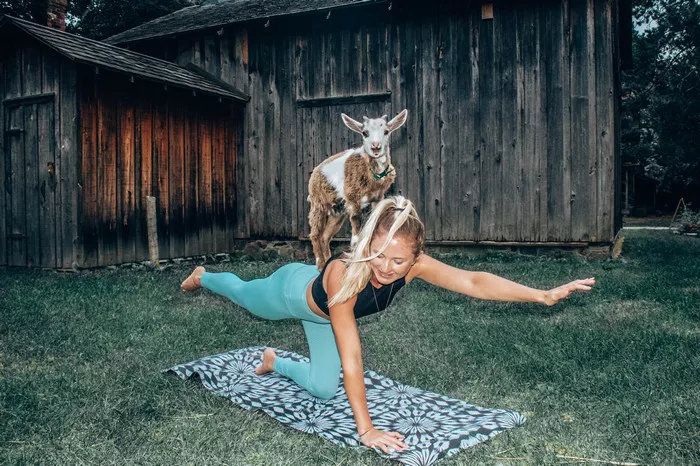Yoga, an ancient practice originating in India, offers a plethora of poses that cater to both physical and mental well-being. Among these is the Caterpillar Pose, a lesser-known yet deeply beneficial asana that enhances flexibility and relaxation. In this article, we delve into the origins, symbolism, physical and mental benefits, variations and modifications, step-by-step instructions, as well as precautions and contraindications associated with the Caterpillar Pose.
Origins and Symbolism
The origins of yoga poses often intertwine with cultural and philosophical roots. The Caterpillar Pose, also known as Paschimottanasana in Sanskrit, derives its name and essence from two Sanskrit words: “Paschima” meaning west or back of the body, and “Uttana” meaning intense stretch. In traditional yoga texts such as the Hatha Yoga Pradipika and the Gheranda Samhita, Paschimottanasana is described as a pose that stretches the entire posterior chain of the body, promoting relaxation and introspection.
Symbolically, the forward fold of the Caterpillar Pose represents surrender and introspection. It encourages practitioners to turn their focus inward, letting go of tension both physically and mentally. This pose is often associated with the concept of grounding and rooting oneself in the present moment, fostering a sense of calm and tranquility.
See Also: A Guide to the Top 10 Complex Yoga Poses
Physical and Mental Benefits
The physical benefits of the Caterpillar Pose are multifaceted, making it a valuable addition to any yoga practice:
Spinal Flexibility: As a seated forward bend, Paschimottanasana stretches the entire length of the spine, promoting flexibility and suppleness.
Hamstring Stretch: The pose deeply stretches the hamstrings and calves, releasing tension accumulated from prolonged sitting or physical activity.
Stimulation of Abdominal Organs: The compression of the abdomen in this pose massages and stimulates the digestive organs, improving digestion and metabolism.
Relief of Lower Back Pain: Regular practice of Paschimottanasana can alleviate mild lower back pain by stretching and lengthening the muscles of the lower back.
Calming the Mind: The forward fold position of the pose helps calm the mind and relieve stress and anxiety, promoting a sense of relaxation and mental clarity.
Mentally, the Caterpillar Pose cultivates mindfulness and introspection. The act of folding forward encourages practitioners to let go of distractions and turn their awareness inward, fostering a meditative state that can enhance emotional well-being and reduce mental fatigue.
Variations and Modifications
Yoga poses often offer variations and modifications to accommodate practitioners of different levels and physical capabilities. Variations of the Caterpillar Pose include:
Half Caterpillar Pose: In this variation, one leg is bent with the sole of the foot placed against the inner thigh of the opposite leg, while the other leg remains extended.
Supported Caterpillar Pose: Using props such as yoga blocks or a bolster under the forehead or knees can make the pose more accessible, especially for beginners or those with tight hamstrings.
Wide-legged Forward Fold: This variation involves a wider stance with the legs spread apart, allowing for a deeper stretch in the inner thighs and groins.
Modifications for Paschimottanasana include bending the knees slightly to reduce strain on the hamstrings or using a strap around the feet to facilitate a deeper stretch for those with limited flexibility.
Step-by-Step Instructions
Mastering the Caterpillar Pose requires attention to alignment and mindful progression. Follow these step-by-step instructions to practice Paschimottanasana safely and effectively:
Starting Position: Begin seated on the yoga mat with your legs extended straight in front of you. Flex your feet, ensuring your heels are grounded.
Inhale and Lengthen: As you inhale, elongate your spine, lifting your arms overhead to lengthen through the sides of your body.
Exhale and Fold Forward: On an exhale, hinge at the hips to fold forward from the pelvis, not the waist. Extend your arms forward alongside your legs or reach for your feet or shins.
Maintain Length in the Spine: Keep your spine long as you fold forward, avoiding rounding the back excessively. Engage your quadriceps to support the extension of your knees.
Breathe and Hold: Hold the pose for 30 seconds to 1 minute, breathing deeply and evenly. With each exhale, release tension and allow your torso to move closer to your thighs.
Release: To release the pose, inhale as you lift your torso back to an upright position, lengthening through the spine.
Precautions and Contraindications
While beneficial, the Caterpillar Pose should be approached with caution, especially if you have certain health conditions or injuries:
Lower Back Issues: Avoid rounding your back excessively if you have lower back pain or injury. Instead, focus on lengthening the spine and bending forward from the hips.
Hamstring Injuries: If you have a hamstring injury, be gentle and avoid overstretching. Use props like blocks or a strap to support your forward fold.
Pregnancy: Pregnant individuals should practice forward bends with caution, keeping the knees bent and focusing on creating space for the baby rather than deepening the stretch.
Digestive Disorders: If you have a digestive disorder or herniated disc, consult with a healthcare professional or experienced yoga instructor before practicing Paschimottanasana.
High Blood Pressure: Avoid holding the breath or straining while in the pose, as this can elevate blood pressure. Instead, breathe smoothly and gently throughout the practice.
Conclusion
In conclusion, the Caterpillar Pose, or Paschimottanasana, offers a wealth of physical, mental, and emotional benefits when practiced mindfully and with awareness of individual limitations. By exploring its origins, symbolism, variations, step-by-step instructions, and precautions, practitioners can integrate this pose into their yoga practice safely, enhancing overall well-being and promoting inner harmony.
Yoga continues to evolve as a transformative practice, and poses like the Caterpillar Pose exemplify its profound capacity to nurture both body and mind on the journey toward holistic health and self-discovery.
Related topics:























